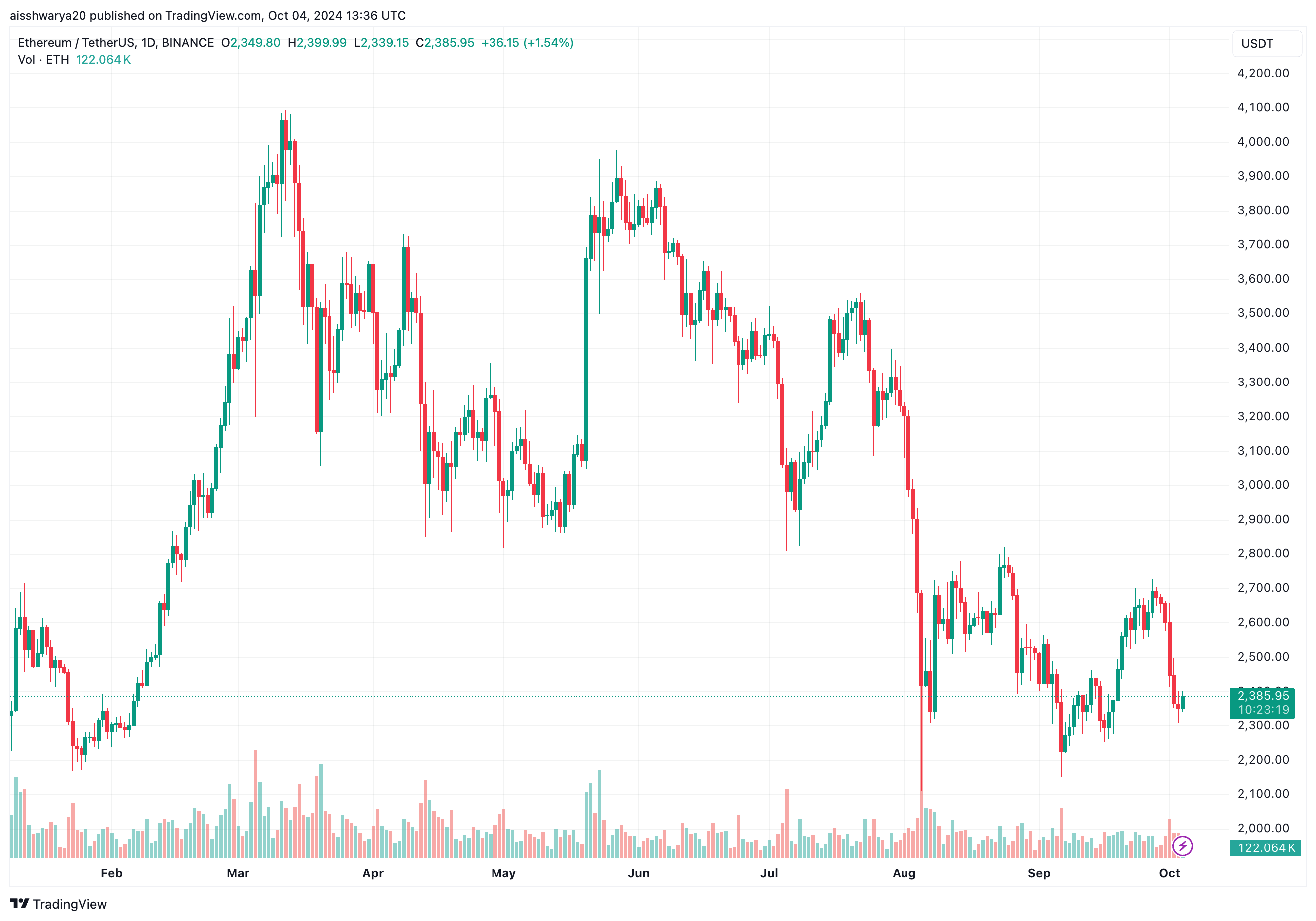This article is also available in Spanish.
According to a recent report by Binance Research, the Ethereum (ETH) issuance rate continued to rise in September 2024, raising concerns about the digital asset’s “ultrasound currency” claim.
The Ethereum issuance rate continues to rise
In its October 2024 Monthly Market Insights reportBinance research showed that the rate of ETH issuance continued its upward trend in September, moving away from its previous deflationary state.
Related Reading
The second-largest digital asset by reported market cap had a 30-day annualized inflation rate of about 0.74%, a rate not seen in the past two years. The sharp rise in ETH supply inflation has called into question its “ultrasound currency” status.
Interestingly, the term “ultrasound currency” draws inspiration from the description of Bitcoin’s (BTC) “sound currency”. While the supply of BTC has reached 21 million, the supply of ETH may decrease, theoretically increasing the deficit and protecting it from the erosion of purchasing power caused by inflation.
The high level of Ethereum issuance can be attributed to several factors, including the low activity of the mainnet on-chain, which leads to low transaction fees and, as a result, low prices of ETH to burn.
In 2021, Ethereum core developers implemented EIP-1559, which introduced a money-burning mechanism that aims to reduce the circulating supply of ETH, thereby creating deflationary pressure on the token.
However, with the decrease in mainnet activity, the amount of ETH burned lags behind the rate of ETH issuance, leading to a trend of net inflation.
Notably, September 2024 had one of the lowest ETH burn rates since expected Mix it up event, when Ethereum switches from proof-of-work (PoW) to proof-of-concept (PoS).
Ethereum Layer-2 Solutions to Solar For Low ETH Burn Rate?
The report points to March 2024 as the first point of inflation for Ethereum, following the implementation of EIP-4844 or Dencun development, which reduced the operating costs of layer-2 measurement networks such as Optimism (OP), Arbitrum (ARB), Base, and Polygon (MATIC). The report adds:
As L2s eat up network traffic throughout the year – negatively impacted by broader market conditions – transaction fees and, as a result, Ethereum’s cash flow decreased, with September recording one of the lowest levels since the merger. This prevented ETH from shrinking in supply to remain deflationary, leading to the net change in daily supply we now see.
Recent trends confirm the above assertion, as network activity in layer-2 solutions is increasing in different metrics. For example, a report in July 2024 they noted that daily active addresses and transaction volume on Polygon had increased significantly.
Related Reading
Similarly, decentralized finance (DeFi) activity on Arbitrum grew earlier this year when DEX) Uniswap. exceeded $150 billion in total transaction value on the network.
Other report found that more than 48% of digital assets placed on the Ethereum network end up on Arbitrum, which shows the high trust of users in the network’s strong layer-2 security and reliability. ETH is trading at $2,385 at press time, up 1.7% in the last 24 hours.

Featured image from Unsplash, charts from Binance Research and Tradingview.com
